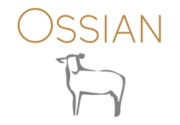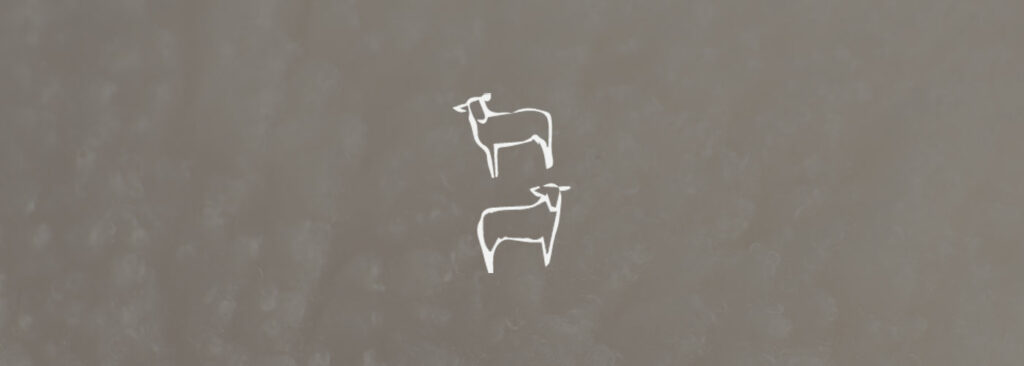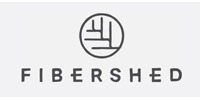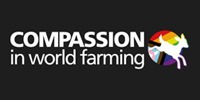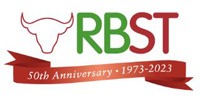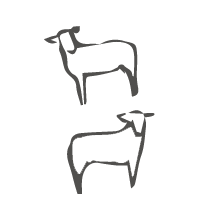
20 of 20 Stages of the Evolution of British Wool
Using Conservation Breeds in the Woollen Industry
British ancient and heritage sheep can be used to regenerate the woollen industry in the UK. The aim for my future practice is to work with processors, spinners and the wool board to create sustainable yarns that will give a natural alternative to the synthetic types that are currently on trend. Working with farmers and designers to create a cooperative way of working for mutual benefit.
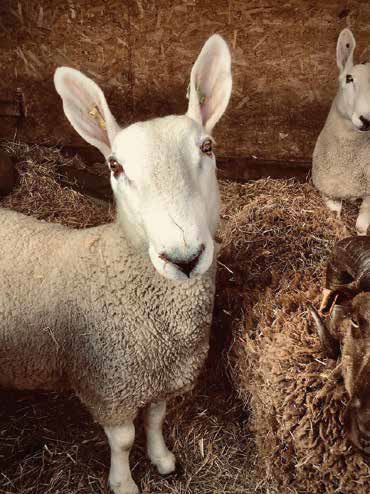
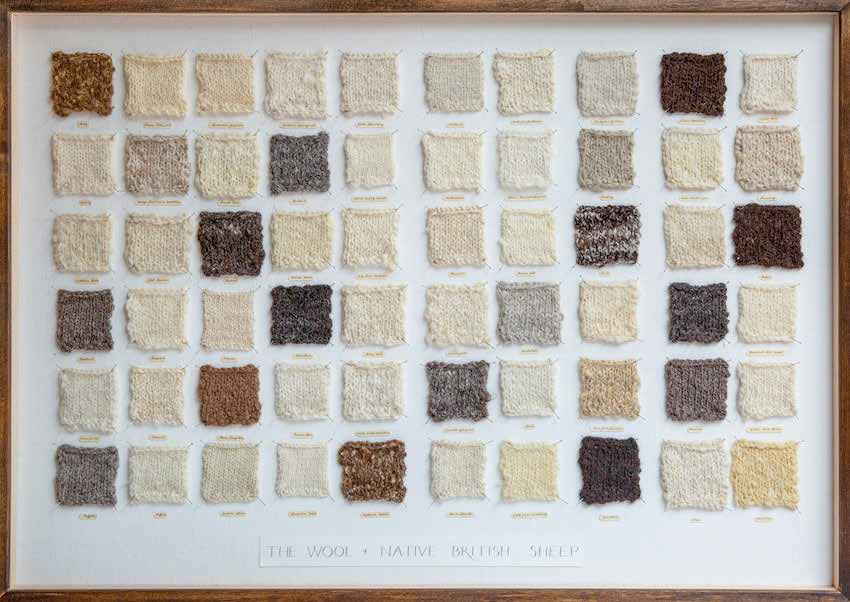
1- Using specific breeds that I have identified in my research , develop a yarn that can perform in the same way as synthetic fleece, it must be light, soft to touch and priced fairly for the farmer and an enlightened consumer. The benefits will be a 100% natural fibre that will bio-degrade. It is time for fleece re-establish its origins.
2- To develop a hairy fashion yarn, usinq heritage wool. Promoting this yarn to other designers who are interested in sustainability. From my experience in the industry, there is an absence of this yarn type. The natural fibres once used to achieve a hairy effect, have been banned for use by PETA, including angora, mohair, cashmere and recently merino.
3- Develop a register of selected ancient and heritage sheep wools and develop a pathway for designers to work with specific farmers who breed these sheep. Hopefully this will encourage more diversity in British wools and also encourage farmers to breed more of the key rare breeds.
4 – Use my own design practice to create a range of knitted quilt styles to offer a natural alternative to the synthetic filled puffa jackets and accessories.
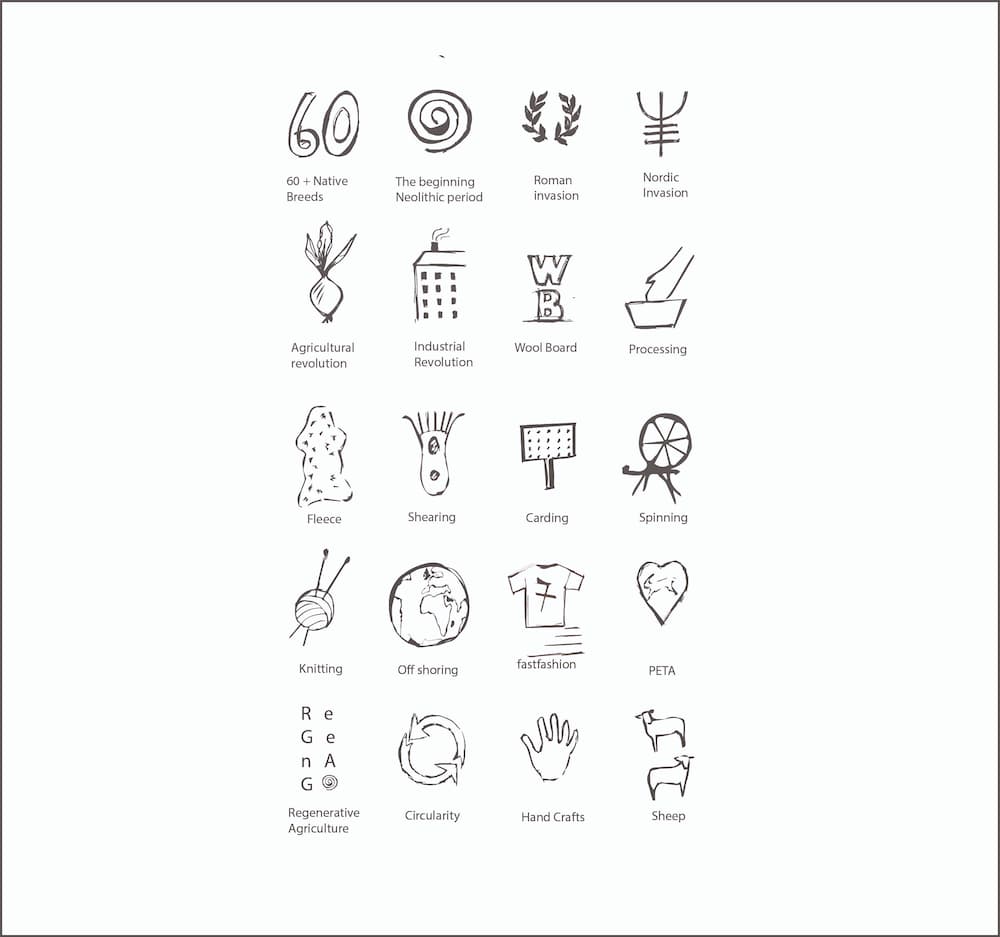
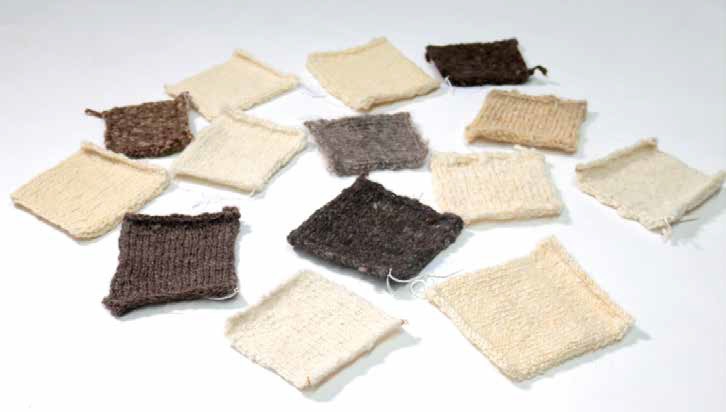
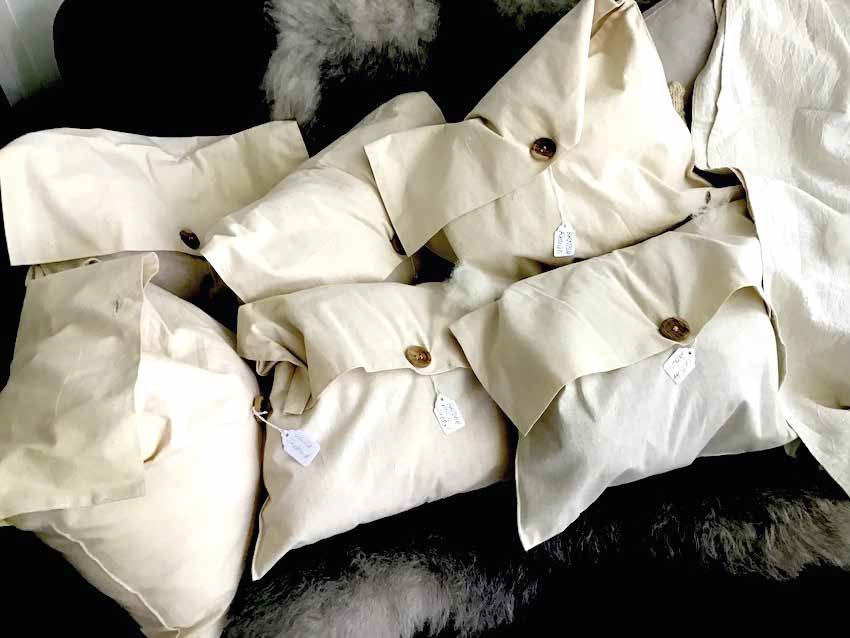
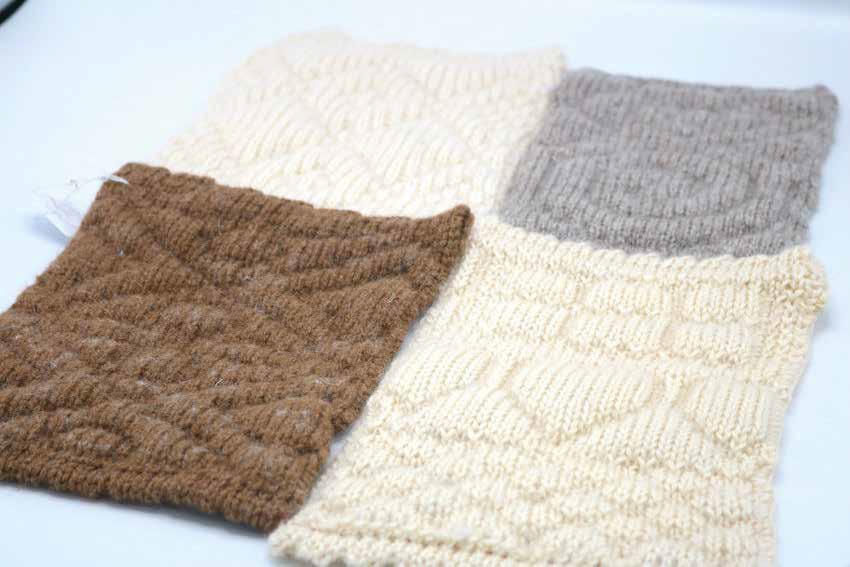
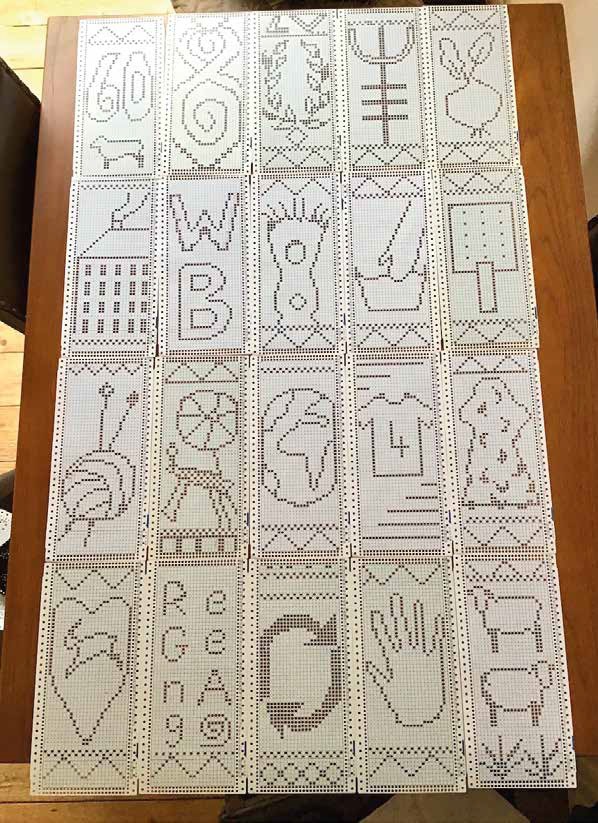
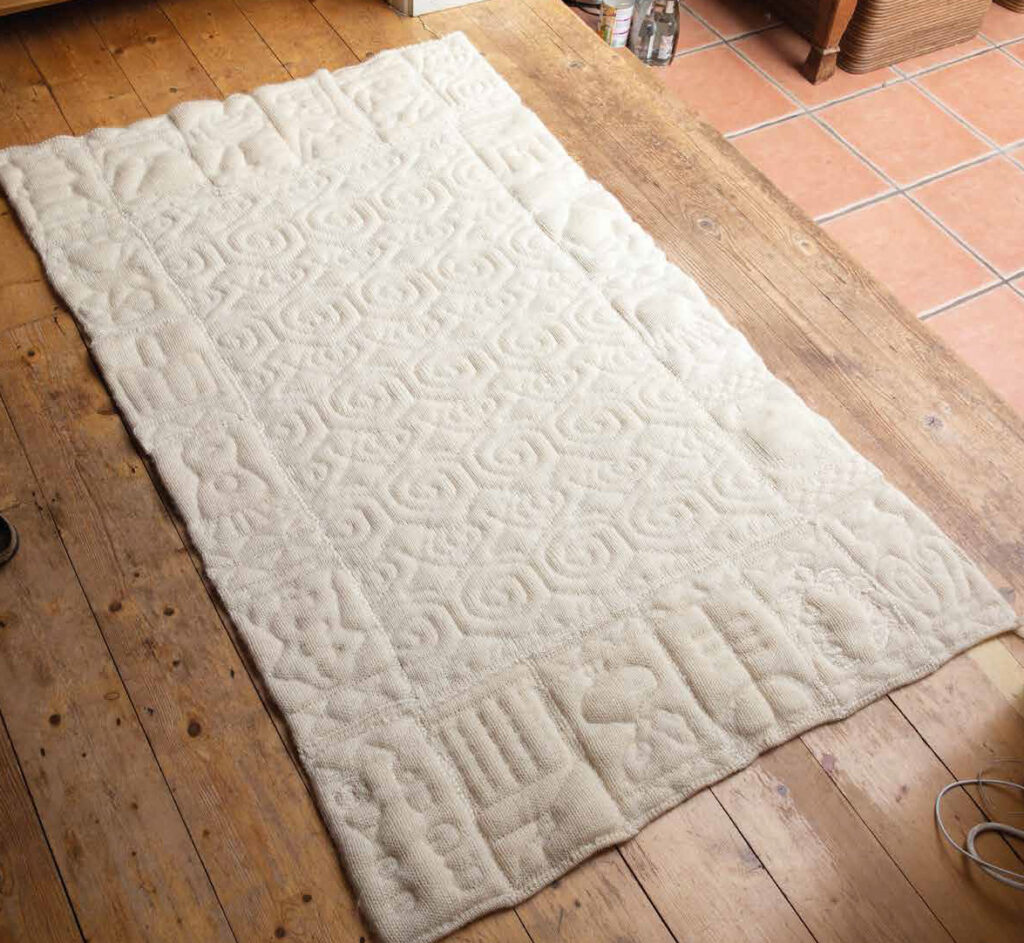
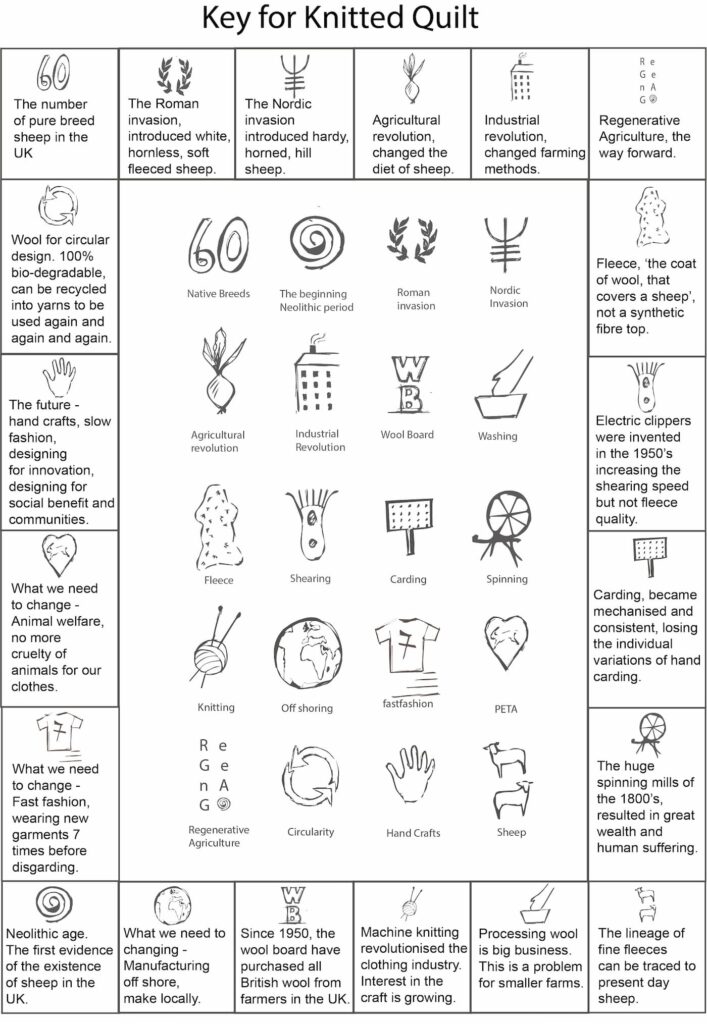
Bibliography
Books & research papers
Chapman, J. (2015). Emotionally Durable Design. 2nd ed. New York: Routledge, p.p31, p164
Defalcon et al (2020) Microfiber Release to Water, Via Laundering, and to Air, via Everyday Use: A Comparison between Polyester Clothing with
Differing Textile Parameters
This: https://dx.doi.org/10.1021/acs.est.9b06892
Ellen Macarthur Foundation (2021) What is the circular economy.
Available at: https://www.ellenmacarthurfoundation.org/circular-economy/ what-is-the-circular-economy(Accessed: 28 April 2021).
Fetcher, K. (2014) Sustainable fashion and textiles: Design journeys. Second edition. Oxen; Routledge. P,14,20,92,116. Jackson, T. (2009) Prosperity Without Growth. First edition. Oxon: Earthscan.
Katie Jones – about . Available at: www.katiejonesknit.co.uk (Accessed: 28 April 2021). Kennard, B. (2014) Much Ado About Mutton. First edition. Shropshire: Merlin Unwin Books.
Kerridge E. (1972) The wool textile industry in Great Britain. First edition. Edited by J. Jenkins. London: Routledge. Thomas, D. (2019). Fashionopolis: The price of fast fashion and the future of clothes. London; Head of Zeus.
Van Hinte, E. (1999) Tresspassers. Netherlands: Rotterdam.
Wild J. (1972) The wool textile industry in Great Britain. First edition. Edited by J. Jenkins. London: Routledge.
Websites
Jiangsu. Guotai – available at http://www.gths.cn/en/productionBase/ Accessed – 3rd September 2021.
Rana Plaze disaster. NY Times
https://www.nytimes.com/2020/03/01/world/asia/rana-plaza-bangladesh-garment-industry.html Accessed – 3rd September 2021
clean clothes campaign.
https://cleanclothes.org/news/2020/the-devastation-of-covid-19-on-uniqlos-former-garment-workers Accessed – 3rd September 2021
Landfill – garments
https://www.theguardian.com/fashion/2017/dec/06/landfill-becomes-the-latest-fashion-victim-in-australias-throwaway-clothes-culture Accessed – 3rd September 2021
Radio
Dr Tamsin Edwards. Radio 4 – 39 ways to save the planet. 30th August 2021
